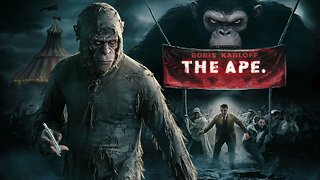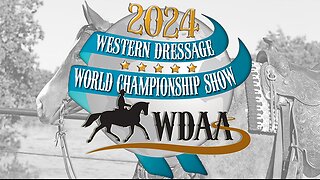GULLIVER'S TRAVELS (1939) Animation, Adventure, Comedy | 4K UHD | TECHNICOLOR
Gulliver's Travels is a 1939 American animated musical fantasy film produced by Max Fleischer and directed by Dave Fleischer for Fleischer Studios.[3] Released to cinemas in the United States on December 22, 1939, by Paramount Pictures, the story is a very loose adaptation of Jonathan Swift's 1726 novel of the same name, specifically only the first part of four, which tells the story of Lilliput and Blefuscu, and centers around an explorer who helps a small kingdom who declared war after an argument over a wedding song. The film was Fleischer Studios' first feature-length animated film, as well as the second animated feature film produced by an American studio after Walt Disney Productions' Snow White and the Seven Dwarfs, as Paramount had commissioned the feature in response to the success of that film.[5] The sequences for the film were directed by Seymour Kneitel, Willard Bowsky, Tom Palmer, Grim Natwick, William Henning, Roland Crandall, Thomas Johnson, Robert Leffingwell, Frank Kelling, Winfield Hoskins, and Orestes Calpini.
SYNOPSIS
A doctor washes ashore on an island inhabited by little people.
CAST & CREW
Sam Parker as Gulliver
Max Smith as Gulliver (singing voice)
Pinto Colvig as Gabby, Snitch, Gulliver (water gurgling sounds)[6]
Jack Mercer as Prince David,[7] King Little, Twinkletoes, Snoop, Horses, Royal Chef
Lanny Ross as the singing voice of Prince David
Tedd Pierce as King Bombo, Sneak, Villagers
Lovey Warren as Princess Glory
Jessica Dragonette as the singing voice of Princess Glory
Joe Oriolo as Italian Barber
Margie Hines as Lilliputian Woman, Princess Glory (some crying and sobs)
Carl Meyer as Lilliputians
Directed by Dave Fleischer
Animation directors: Seymour Kneitel, Willard Bowsky, Tom Palmer, Grim Natwick, William Henning, Roland Crandall, Thomas Johnson, Robert Leffingwell, Frank Kelling, Winfield Hoskins, Orestes Calpini
Written by Dan Gordon, Cal Howard, Tedd Pierce, Edmond Seward, Isadore Sparber
Based on Gulliver's Travels by Jonathan Swift
Produced by Max Fleischer
Cinematography Charles Schettler
Music by Victor Young, Leo Robin (songs), Ralph Rainger (songs), Al Neiburg (songs), Winston Sharples (songs), Sammy Timberg (songs)
Production companies Paramount Pictures, Fleischer Studios
Distributed by Paramount Pictures
Release date December 22, 1939
Running time 76 minutes
Country United States
Language English
Budget $700,000
Box office $3.27 million
Max Fleischer had envisioned a feature as early as 1934, but Paramount vetoed the idea based largely on their interests in maintaining financial solvency following their series of bankruptcy reorganizations. However, after the success of Walt Disney Productions' Snow White and the Seven Dwarfs, Paramount wanted to duplicate the Disney success and ordered a feature for a 1939 Christmas release, which would be Paramount's very first animated feature. When the story was first written in New York, Popeye the Sailor had originally been cast as Gulliver. This was scrapped, however, and the story was restructured once the West Coast team of Cal Howard, Tedd Pierce, and Edmond Seward came aboard (although Popeye would later be cast as a Gulliver-like character in an abridged version of the story called "Popeye's Travels", made for the 1960s Popeye the Sailor television show).
One of the major challenges for Fleischer Studios was the 18-month delivery envelope, coming at a time when Fleischer Studios was relocating to Miami, Florida. While Snow White was in production for 18 months, it had been in development for just as long, allowing for a total of three years to reach the screen. To meet this deadline, the Fleischer staff was greatly expanded to some 800 employees. Animation training classes were set up with Miami art schools as a conduit for additional workers. Experienced lead animators were lured from Hollywood studios, including Nelson Demorest, Joe D'Igalo, and former Fleischer Animators Grim Natwick, Al Eugster, and Shamus Culhane, who returned after working for the Walt Disney Studios.
Several West Coast techniques were introduced in order to provide better animation and greater personality in the characters. Some animators adapted while others did not. Pencil tests were unheard of in New York but were soon embraced as a tool for improving production methods. While the majority of the characters were animated through conventional animation techniques, rotoscoping was used to animate Gulliver, Glory, and David.
Fleischer Studios delivered Gulliver for Paramount's planned Christmas release schedule, opening in New York on December 20, 1939, going into general release two days later. Considering the potential demonstrated in the two Popeye specials, Gulliver's Travels lacked the built-in brand recognition of those shorts. This much-anticipated feature produced by Max Fleischer was still met with by an eager public and started out well, breaking box-office records in spite of the inevitable comparisons to Snow White.
-
 1:02:42
1:02:42
Lost n Found Films
7 days agoTHE APE (1940) Boris Karloff, Maris Wrixon & Gene O'Donnell | Horror | B&W
79 -
 1:14:10
1:14:10
Talk Nerdy 2 Us
23 hours agoHacks, Leaks & Big Tech Control: Is Your Data Under Siege by Shadow Powers?
58.1K14 -
 UPCOMING
UPCOMING
I_Came_With_Fire_Podcast
13 hours agoFood Security & the American Beef Industry: AJ Richards on Supply Chain Risks & The SUSTAINSAct
36.1K2 -
 4:41:10
4:41:10
Tundra Gaming Live
14 hours agoThe Worlds Worst Horror Streamer Has Heart Attack Playing Phasmophobia
69K8 -
 1:38:24
1:38:24
JoBlo Originals
11 hours agoFriday Night Flicks!
71.3K14 -
 5:09:20
5:09:20
Nerdrotic
16 hours agoAgatha All Along Geyest Show EVER! Rings of Power Girl POWER! - Friday Night Tights #320 Jonny Law
136K46 -
 1:18:43
1:18:43
Edge of Wonder
12 hours agoPager Explosions: How Technology Can Be Used Against Us
77K23 -
 8:19:47
8:19:47
Akademiks
18 hours agoDiddy Arrest Footage LEAKED! Police Say He's ON S*ICIDE watch after Being Locked up in MDC BROOKLYN
201K112 -
 11:44:20
11:44:20
Total Horse Channel
23 hours ago2024 WDAA World Championship Show | Friday | Arena One
76K1 -
 4:16
4:16
The Worlds Funniest Animals
13 hours agoAnimals Gone Wild Compilation
59.7K19